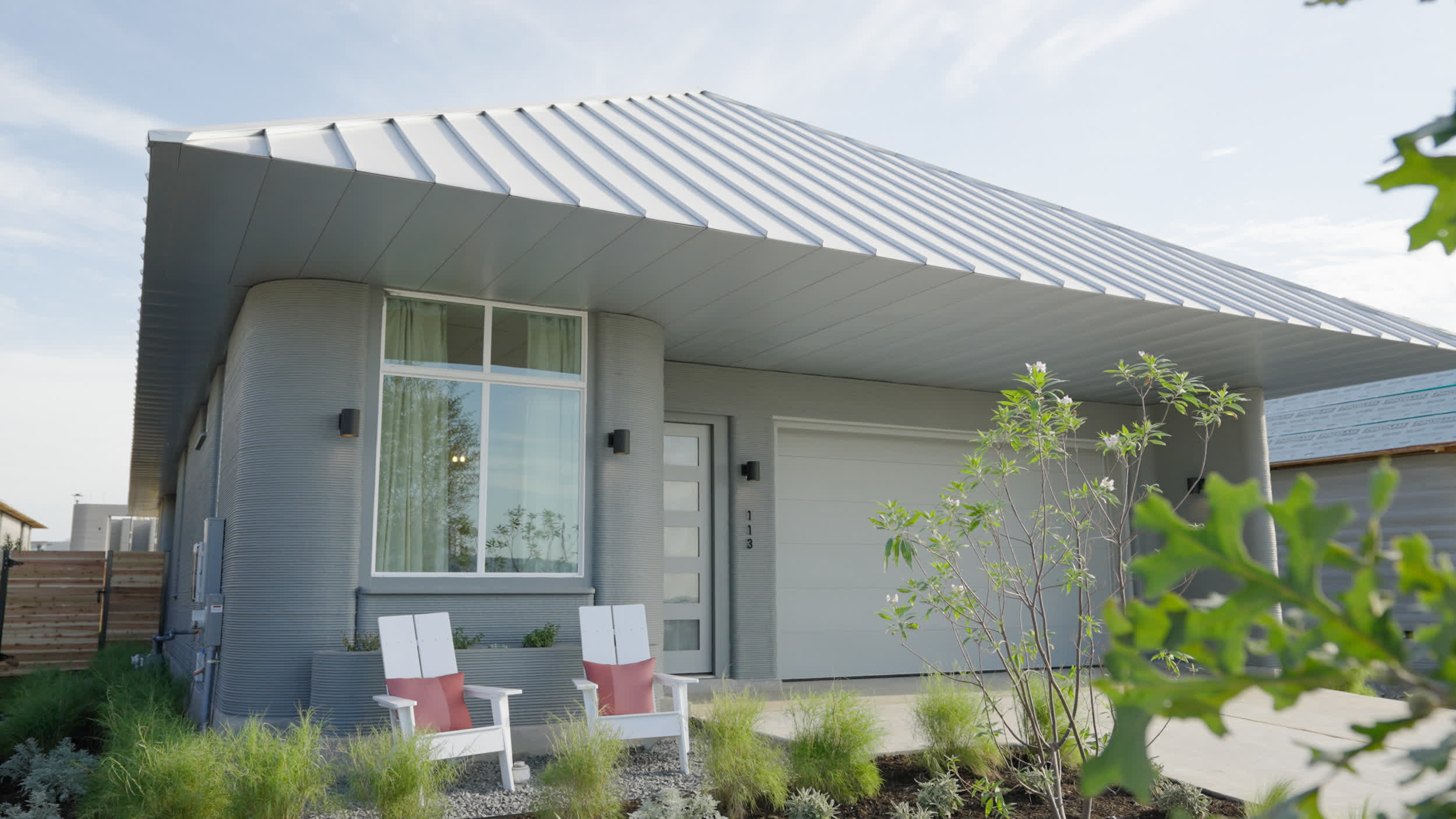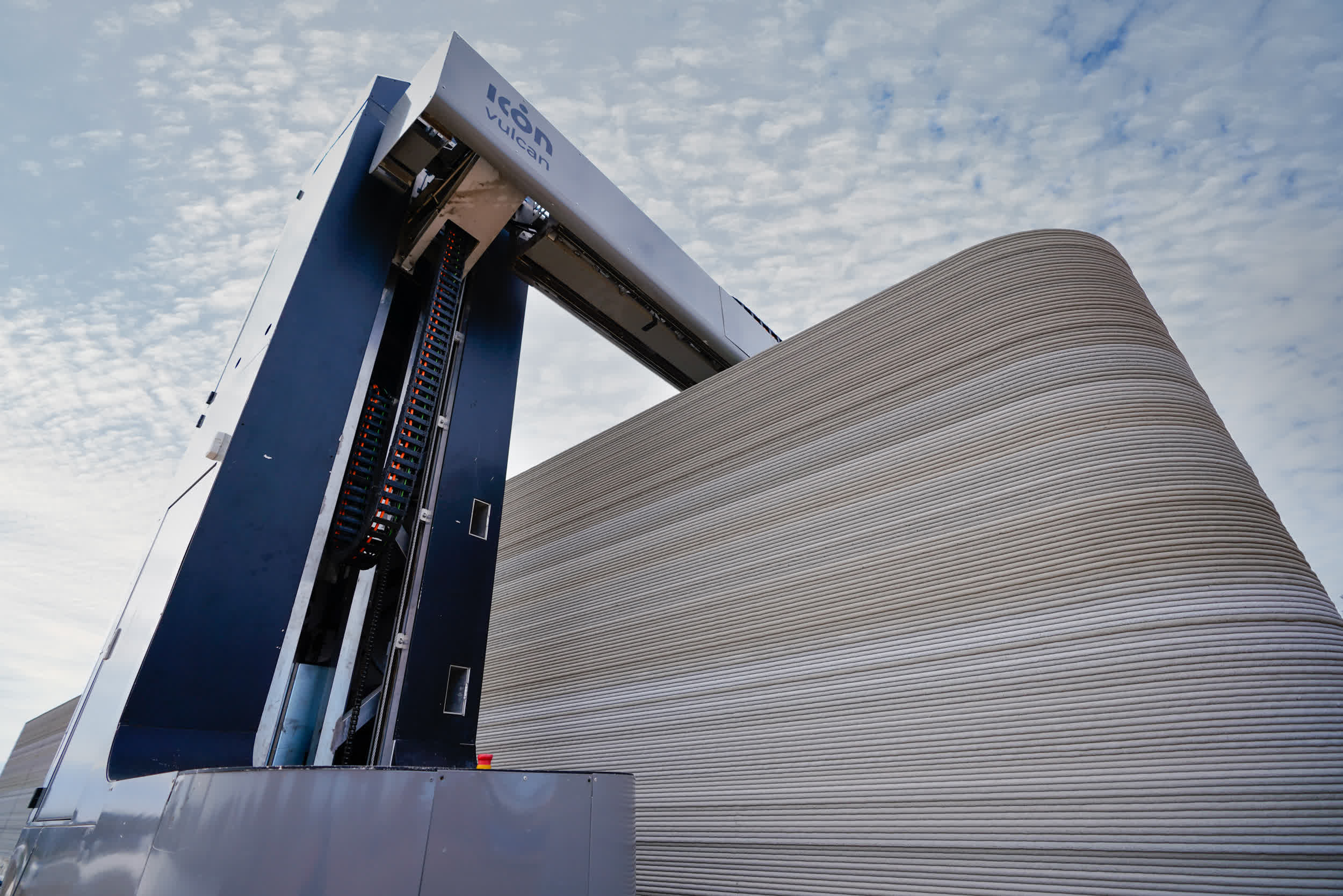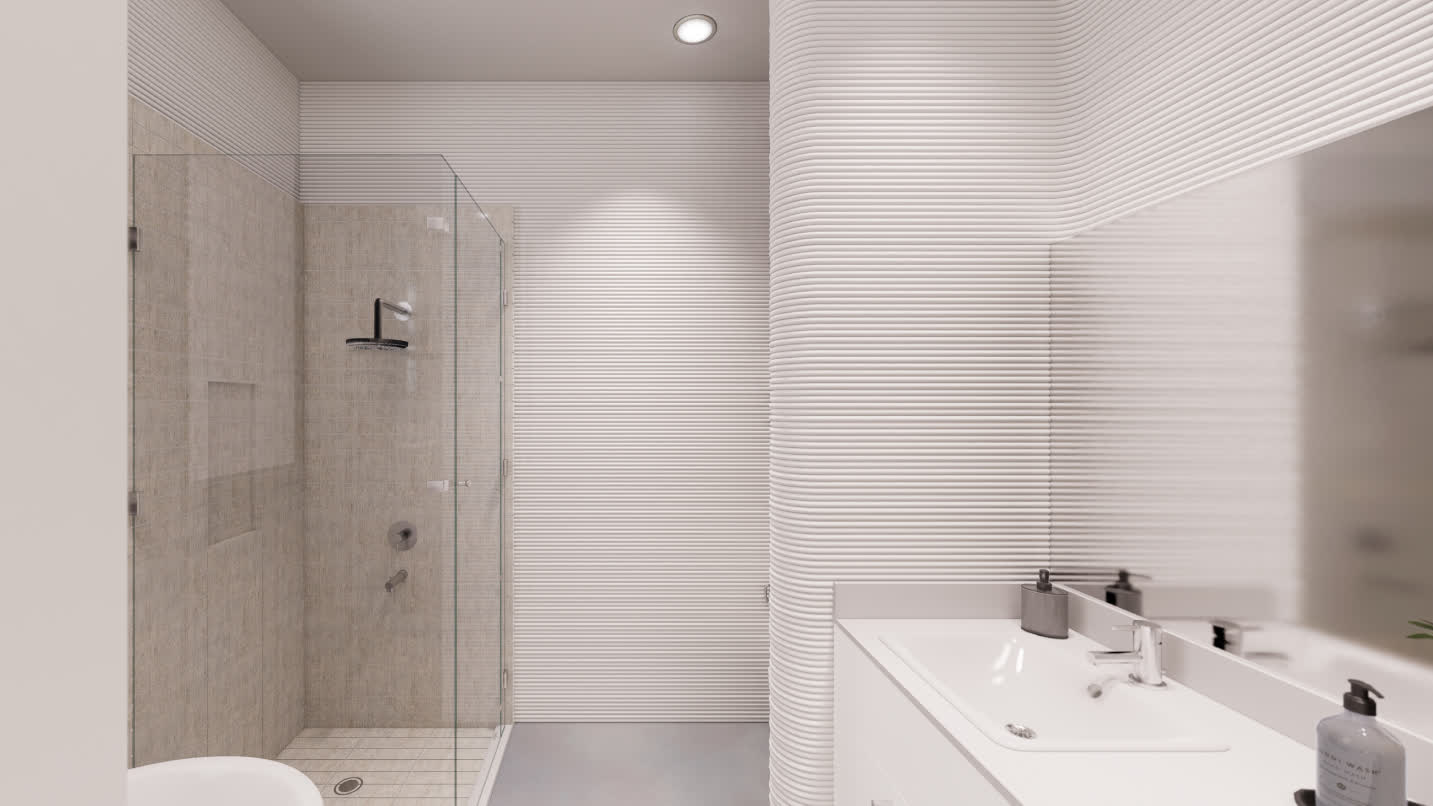In brief: Icon is nearing completion of a planned community in Georgetown, Texas, consisting of 100 3D printed homes. The unconventional construction company started working on the project in the Wolf Ranch community in late 2022 and expects to wrap up work by the end of the summer.

Icon utilizes a massive 3D printer measuring more than 45 feet wide and weighing 4.75 tons. It uses a mixture of concrete powder, sand, water, and other additives to build walls layer by layer, squeezing out the mixture like toothpaste out of a tube. The resulting walls look like textured corduroy.
The single-story homes take just a few weeks to print, and rely on traditional foundations and metal roofs. The thick concrete walls are said to be resistant to water, termites, mold, and extreme weather, and help keep homes cool during hot Texas summers.

Icon senior project manager Conner Jenkins told Reuters that its process is faster and cheaper than a traditional home build, requires fewer workers, and also minimizes material waste.
One potential downside is the fact that the 3D printed walls are incredibly effective at blocking wireless signals. This has prompted some early adopters to opt for mesh Wi-Fi systems for whole-home connectivity.
Pricing starts at just under $470,000 for a three bedroom, two bath home with 1,574 square feet and tops out near $600,000 for a build with closer to 2,000 square feet. Developers told Reuters that roughly a quarter of the 100 homes have already been sold.

For Icon, it's onward and upward. In late 2022, NASA awarded the Austin-based company a $57.2 million contract to develop construction technologies to help build infrastructure like buildings, roads, and landing pads on the Moon.
Icon also built the 1,700 square foot 3D printed Mars Dune Alpha that volunteers recently lived in for a year to simulate life on the Red Planet. The first wave of participants, who emerged from the habitat in July, spent 378 days in near isolation in the simulated environment to help NASA prepare for a future mission to Mars.